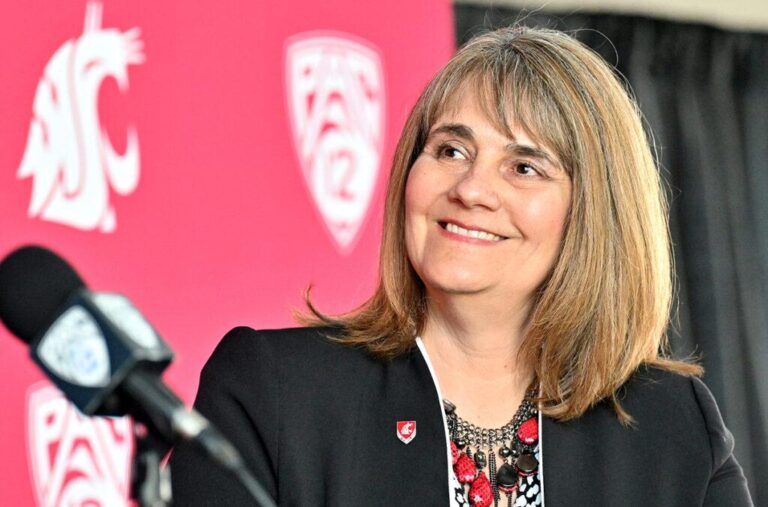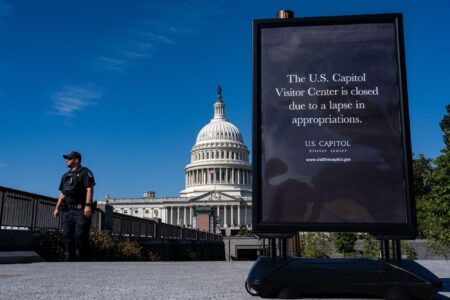Washington State University’s Athletic Department Faces Financial and Structural Challenges
Anne McCoy Discusses the Reduction of Track and Field Programs Amid Budget Pressures
Anne McCoy, Athletic Director at Washington State University, recently provided an in-depth perspective on the tough choice to downsize the track and field teams. This decision comes as part of a broader effort to address significant financial pressures and the ongoing transformation within the Pac-12 Conference. McCoy stressed that the move was made after careful consideration, aiming to preserve the overall stability of the athletics department.
She pointed out that the rising expenses of running a competitive Division I program‚ÄĒsuch as travel costs, staff salaries, and facility maintenance‚ÄĒhave been exacerbated by changes in conference revenue sharing and the shifting collegiate sports environment.
Key elements influencing this decision include:
- Ensuring financial viability: Managing the budget to sustain as many sports as possible.
- Adapting to conference realignment: Adjusting to the Pac-12’s evolving structure and its effects on scheduling and income.
- Supporting student-athletes: Providing resources such as scholarships and transfer assistance to those impacted.
| Focus Area | Outcome |
|---|---|
| Budget Restructuring | Secures long-term financial health of athletics |
| Conference Adaptation | Responds to new media deals and scheduling challenges |
| Athlete Assistance | Ensures continued support and opportunities for affected athletes |
How Pac-12 Realignment is Reshaping Athletic Departments
The recent upheaval within the Pac-12 Conference has forced member institutions, including Washington State, to reevaluate their athletic budgets and program priorities. The departure of prominent teams and the resulting conference realignment have disrupted traditional scheduling and competitive balance, while also significantly reducing shared revenue streams.
Anne McCoy highlighted the importance of flexibility and strategic planning in this uncertain environment, noting that fluctuating media rights agreements and unpredictable postseason earnings require athletic departments to be more agile than ever.
In response, many schools have made difficult choices, such as cutting certain sports programs and reallocating resources to maintain competitiveness and compliance. Washington State’s decision to discontinue its track and field teams exemplifies these challenges.
- Declining conference revenue impacting operational budgets
- Heightened obligations to meet Title IX gender equity standards
- Increased emphasis on fundraising and community involvement
- Balancing athletic competitiveness with fiscal responsibility
| Area Affected | Impact on Athletics |
|---|---|
| Media Rights Income | Reduced funding leading to tighter budgets |
| Sport Offerings | Elimination of select programs such as track and field |
| Recruitment | Difficulty attracting and retaining elite athletes |
| Donor Engagement | Greater reliance on fundraising initiatives |
Financial Realities and Their Influence on Collegiate Sports Programs
Washington State’s Athletic Director Anne McCoy has been transparent about the financial hurdles confronting collegiate sports today. The recent elimination of the track and field program reflects a nationwide trend where universities must make tough choices to ensure long-term sustainability.
McCoy identified several critical factors complicating budget management:
- Escalating costs related to operations and facility maintenance
- Declining revenues from traditional streams such as ticket sales and broadcast rights
- Uncertainty surrounding conference affiliations and media contracts
Below is a summary of Washington State’s athletic department financial performance over the past three fiscal years, illustrating the growing budget deficits:
| Fiscal Year | Revenue (in millions) | Expenses (in millions) | Net Balance (in millions) |
|---|---|---|---|
| 2021-2022 | $48.3M | $50.7M | -$2.4M |
| 2022-2023 | $45.9M | $49.8M | -$3.9M |
| 2023-2024 | $43.2M | $47.3M | -$4.1M |
Despite these financial challenges, McCoy remains dedicated to fostering athletic excellence by embracing innovation and cultivating strategic partnerships that can help stabilize the department’s future.
Effective Strategies to Sustain Athletic Programs During Budget Reductions
In light of tightening budgets, athletic departments must implement comprehensive strategies to maintain program quality while controlling expenses. Prioritizing sports with strong community support and high athlete development potential is critical. Additionally, expanding collaborations with local enterprises and alumni can diversify funding sources, lessening reliance on traditional income like ticket sales and university allocations.
Recommended approaches for program sustainability include:
- Launching focused fundraising campaigns that highlight compelling athlete and team narratives to engage donors emotionally.
- Establishing cost-sharing partnerships with neighboring schools for shared use of training facilities and staff.
- Investing in digital platforms to boost fan engagement and generate new revenue through streaming services and merchandise sales.
- Conducting frequent financial reviews to identify inefficiencies and redirect funds toward high-impact initiatives.
| Sustainability Tactic | Expected Benefit |
|---|---|
| Community Engagement | Enhances local support and increases donor contributions |
| Shared Facilities | Reduces operational expenses |
| Digital Outreach | Expands fanbase and diversifies revenue streams |
| Financial Audits | Improves budget efficiency and resource allocation |
Conclusion: Balancing Tradition and Financial Responsibility at Washington State
As Washington State University confronts a rapidly changing collegiate sports environment marked by conference realignments and fiscal challenges, Athletic Director Anne McCoy’s transparent commentary reveals the complexity of decisions facing the program. The discontinuation of the track and field teams underscores the difficult balance between honoring athletic traditions and ensuring financial sustainability. Looking ahead, McCoy’s commitment to supporting student-athletes and fostering competitive success within these constraints will be pivotal in shaping the future of Cougar athletics in the Pac-12 and beyond.







